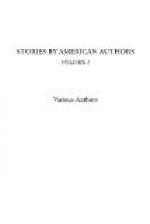“Now the shekels were of the coinage of Simon, the high priest, which Antiochus authorized him to issue. They bore the pot of manna and the flowering rod of Aaron, the high priest. But he to whom they were given knew that they were the price of blood, and was afraid. And he stamped them with a mark in shape like a cross. And great tribulations came upon him, and tribulation came upon all that bought and sold with the money of Judas.” Later on, Leontinus, a Byzantine writer of the sixth century, in a treatise devoted to showing the efficacy of certain forms and processes in imparting virtue to inanimate matter, instances as well known the malevolence inherent in the thirty pieces of silver of Judas, which carry ruin wherever they go. From this time the legend is traced down through successive periods. The Middle Ages, which so delighted in the romantic, the mysterious, the portentous, received it implicitly. Eginhard, abbot of Seligenstadt under Charlemagne, William of Malmesbury, the English chronicler of the twelfth century, Roger Bacon of the thirteenth, Malespini, the Italian chronicler of the same period, and many others of equal note mention as fully established that the coins of Judas were in circulation, and were inflicting serious injury upon those into whose possession they came. It was said to be impossible to amalgamate them with any other silver. They either would not melt or in melting remained distinct. This, however, was a disputed point. Some of the alchemists in their writings seem disposed to attribute the ill success of their efforts at transmutation to the presence of some taint of these pieces in the silver upon which they were experimenting.
Matthew Paris, who first popularized the legend of the Wandering Jew, as now received, strangely enough makes no mention of them.
The conclusions arrived at by Barwood were these:—
1. There was for hundreds of years a general belief in the existence and active circulation of the thirty pieces paid to Judas.
2. They were supposed to be sent as a divine judgment, and to leave ruin in their track.
3. The tradition gradually disappeared and cannot be traced in the literature of modern times.
Here was a valuable pursuit for a young American treasury clerk of the nineteenth century! It would have been interesting to have got the general’s opinion upon it, if it could have been sought in some hurried interval of his confidential transactions with Richard Roe, claim agent and brother-in-law, or his attention to addition and division with Congressman Doublegame.
Barwood did not stop here. Now that his belief was put into tangible shape, he felt impelled onward to its realization. He examined minutely every coin collection in Washington. Then, as he could, he made journeys to several of the great cities. Very seldom did he find a specimen of Jewish money of any kind. Jewish coins are rare. “It is known that the Jews had no coinage of their own until the time of Maccabeus. Simon Maccabeus, by virtue of a decree of Antiochus (1 Macc. xv. 6) issued a shekel and also a half-shekel. These with the exception of some brass coins of the Herods, Archelaus, and Agrippa, and a doubtful piece attributed to Bar Cochba, the leader in the last rising against the Romans, are the only coins of Judea extant.”




